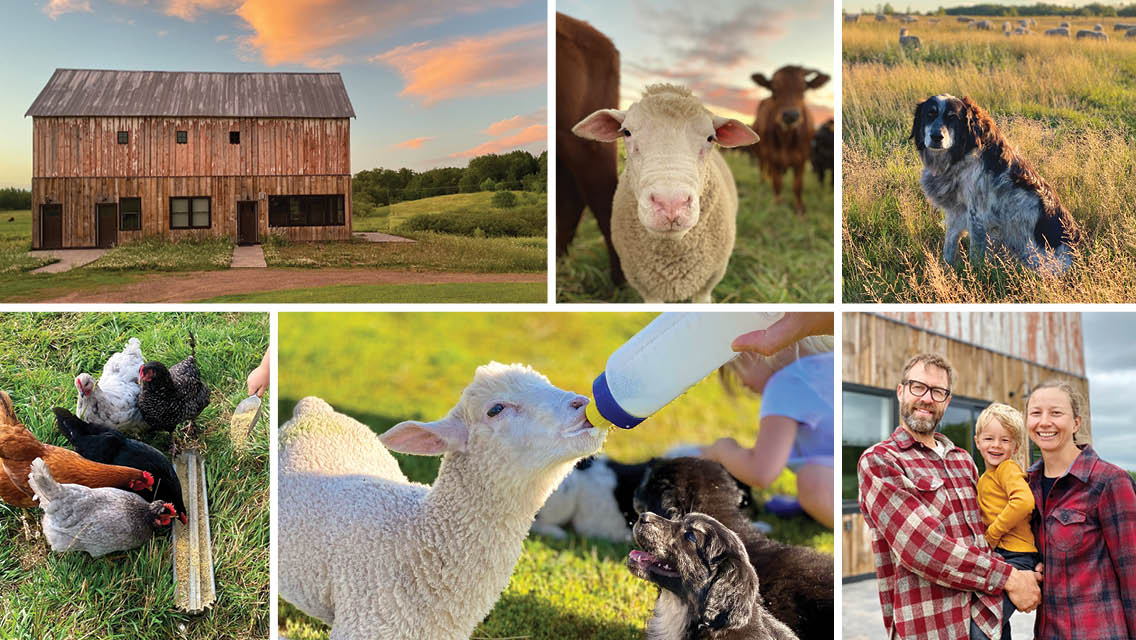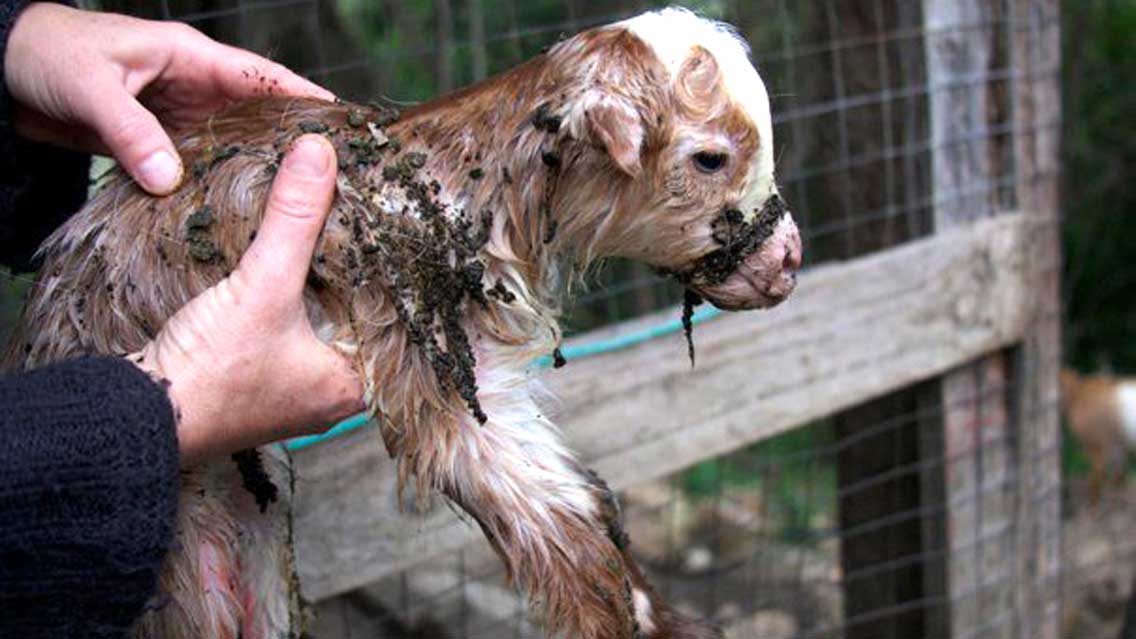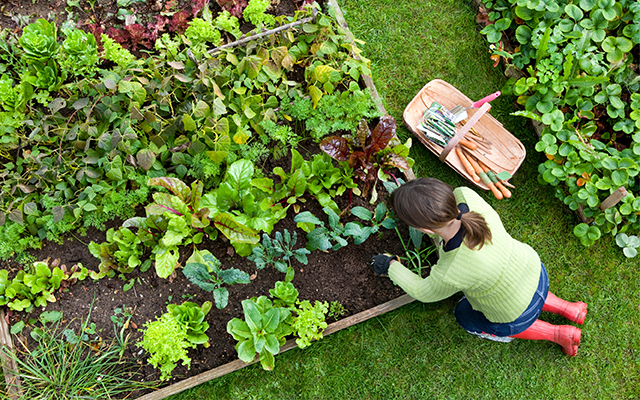Hannah Bernhardt lifts one end of a red metal gate and swings it away from the fence line, creating a narrow, sharp-turn passage between two paddocks on her farm. It’s sometimes tricky to get her flock of sheep to maneuver this bend that connects this pasture to the hillside where she wants them to graze next.
She calls out a high-pitched “Sheep — c’mon, sheeeeeep!”
My 15-year-old daughter, Frances, and I laugh nervously and take a step back, but the only animals to respond are three specially bred livestock-guardian dogs. These large, fluffy canines with deep, protective barks defend Bernhardt’s sheep from the coyotes, wolves, black bears, bobcats, and cougars that prowl the range.
She sings for her sheep again.
“They’re being a little slow today,” she explains, giving the largest dog, Griffin, a scratch on the head.
This time, the mass of wool at the far end of the paddock breaks into 50 trotting, bleating sheep heading straight toward us.
Sure enough, as they get to the complicated turn, they hesitate. Bernhardt and the dogs demonstrate where to go, and all but a handful scuttle through and head up the hill toward fresh grass.
Frances and I are at Medicine Creek Farm in northeastern Minnesota for some rural R & R. Frances wants to hang out with the animals, and I’m eager to see what life is like on a working farm.
The accommodations are hardly rustic: Our well-appointed two-bedroom apartment, complete with a full kitchen and board games, occupies the ground floor of a hand-reconstructed, 1880s-era timber-frame barn. Bernhardt’s husband, Jason Misik, relocated the barn board by board from a farm in southern Minnesota.
Bernhardt is a generous host with a benevolent ulterior motive. In addition to hoping we’ll reap therapeutic benefits from our pastoral “farm stay,” she wants us to take away a deeper understanding of our food’s origins.
Key to this is recognizing the importance of regenerative-farming practices that improve the health of the soil — and the nutritional quality of our food.
Back to the Land
Medicine Creek Farm is among a growing number of small to midsize farms and ranches across the country drawing visitors for a taste of agrarian life. The umbrella term “agritourism” refers to a wide range of experiences people can enjoy, including berry and apple picking, corn mazes and hayrides, winery tours and dude-ranch getaways, as well as living-history farm tours.
Some farms even offer homestay opportunities through organizations like Worldwide Opportunities on Organic Farms (WWOOF), exchanging lodging for farm work.
Agritourism is a growing segment of the tourism industry, with revenues more than tripling between 2002 and 2017, according to data from the U.S. Census of Agriculture.
The forces behind this boom are practical as well as ideological. The economics of small-scale, local farming in an era of consolidated, industrial food production have made agritourism a lifeline for these farms.
It also helps farmers — especially those interested in connecting consumers more deeply to their food sources — make a strong case for supporting local, environmentally responsible farms.
“During the pandemic, large meat-processing plants got closed down and it backlogged the whole system. When you’re reliant on only a few companies doing all that processing, it’s really dangerous. The more you can have local and regional food systems and process things regionally, the more resilient you are to any sort of disruption to supply chains.”
“We’re farming with nature,” Bernhardt explains. “For livestock, we’re lambing or calving in the spring and harvesting most of our animals in the fall. So, there’s a time of year when we don’t have a lot of income, and having people here throughout the summer is a way to keep cash flow coming in.”
Agritourist spending also helps revitalize rural economies, increasing the local tax base and bringing dollars to Main Street businesses.
Supporting small-scale farmers through agritourism — and then buying directly from them when you can — has the potential to shift things on a macro level, as well.
“During the pandemic, large meat-processing plants got closed down and it backlogged the whole system,” Bernhardt says. “When you’re reliant on only a few companies doing all that processing, it’s really dangerous. The more you can have local and regional food systems and process things regionally, the more resilient you are to any sort of disruption to supply chains.”
Life on the Farm
A visit to Medicine Creek Farm usually includes a meet and greet with Bernhardt’s animals: In addition to sheep and their guardian dogs, she raises pigs, cattle, and chickens. It’s all part of a firsthand experience with the interconnectedness of plants, soil, animals, and humans.
As we wait in the sheep paddock for one reluctant ewe and four lambs to trot through the gate, Bernhardt points to the nibbled and trampled grasses (she estimates there are at least seven varieties) around us.
“Rotational grazing is our main soil-health practice,” she explains. When bison herds once roamed nearby tallgrass prairies, they put a lot of pressure on one small area at a time. But because they were constantly on the move due to predator pressure, they were never in one place long.
“The grasses evolved to respond positively to that kind of short-term impact and stress, followed by longer periods of rest and recovery.”
By keeping her animals in small paddocks and moving them daily or every other day, Bernhardt gives the grassland and the soil beneath it — as well as the animals — ideal conditions in which to thrive. As the flock competes for limited grass in each paddock, her sheep ultimately eat a more diverse diet across the greater pasture, which makes them healthier.
This, in turn, translates to more nutrient-dense food for the humans who eat them. “Soil health is the foundation of animal health, which is the foundation of human health,” she explains.
Farm to Heart to Plate
The less bucolic realities of raising animals for food were on my mind during this visit. (Frances’s commitment to vegetarianism remains solid.) But Bernhardt loves the animals she raises and believes in providing them a stress-free life. Her pragmatic view of animal husbandry is imbued with compassion as she ensures that her animals’ lives, and even their final days, remain relatively calm.
Spending time with Bernhardt made me realize how much more honest it feels to meet the animals that may someday end up on my plate than to anonymously shop the meat case at the grocery store.
“We’re so disconnected from our food and where it comes from,” she says. “But when you know your farmer and you get to see how your food is raised, you can see that it’s not just about something printed on a label. You can see how my animals live outside and how I interact with them. I think the No. 1 thing is how stress-free their lives are.”
And though the realities of running a farm aren’t always idyllic for the farmer either, Bernhardt’s commitment runs deep.
“Humans have really old relationships with animals, and I think people forget that,” she says. When people visit her farm — and many ask to help out while they’re there — they connect with what it means to feel a relationship with their food.
“This is what I want people to see,” she says, gazing across the wide-open pasture. “I want people to experience this and know the same joy that I get from it.”





This Post Has One Comment
Hannah Bernhardt is deeply caring in her animal husbandry and tending to the soil’s microbial health and carbon sequestration. Her husband Jason Misik is as passionate about recycling , reusing and preserving the buildings on their land. They make an exceptional team to keep Medicine Creek Farm thriving. Visiting and spending time there on their farm is a peaceful and enjoyable experience. Sunrises, moonrises and gorgeous sunsets when Mother Nature is showing off her beauty. Enjoy your next getaway at Medicine Creek Farm and leave your electronics at home and listen to the natural surroundings.